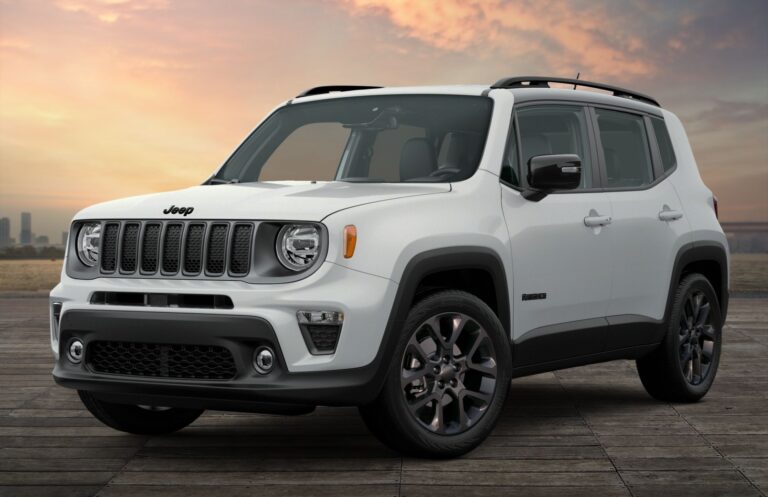How Much Does A Jeep Wrangler 2 Door Hardtop Weight? Unveiling the Facts for Safe Handling and Storage
How Much Does A Jeep Wrangler 2 Door Hardtop Weight? Unveiling the Facts for Safe Handling and Storage jeeps.truckstrend.com
The Jeep Wrangler, an undisputed icon of adventure and off-road prowess, offers an unparalleled sense of freedom, largely thanks to its removable roof. For many enthusiasts, the hardtop provides security, insulation, and a quieter ride, but come summer, the call of the open air is irresistible. Yet, before you embark on the ritual of shedding your Jeep’s shell, a crucial question arises: How much does a Jeep Wrangler 2-door hardtop actually weigh?
Understanding the weight of your Wrangler’s hardtop isn’t just a matter of curiosity; it’s fundamental to safe and efficient removal, storage, and even understanding its subtle impact on your vehicle’s dynamics. Attempting to lift a heavy object without proper knowledge or assistance can lead to injury or damage to your prized possession. This comprehensive guide will delve into the specifics of 2-door Wrangler hardtop weights across different generations, explore the factors influencing these figures, and provide practical advice for handling and storing this significant piece of your Jeep.
How Much Does A Jeep Wrangler 2 Door Hardtop Weight? Unveiling the Facts for Safe Handling and Storage
Understanding Hardtop Weight: What Factors Influence It?
The weight of a Jeep Wrangler 2-door hardtop isn’t a static number. Several key factors contribute to its overall heft, evolving with each generation of the legendary off-roader:
-
Generation of Jeep Wrangler: Jeep has produced several distinct generations of the Wrangler, each with design and material updates.
- TJ (1997-2006): These hardtops were generally simpler, often a single-piece design, impacting their overall weight.
- JK (2007-2018): The JK introduced the popular "Freedom Panels," two removable sections over the front seats, which changed the structural design and material composition slightly. While the entire top is still a singular unit for removal, these panels are part of the overall weight.
- JL (2018-Present): The latest generation refined the hardtop design further, often incorporating improved insulation, sound deadening, and sometimes slightly thicker materials or more complex internal structures for rigidity.
-
Material Composition: Most Jeep hardtops are made from a fiberglass composite material. While fiberglass is relatively lightweight for its strength, variations in density, thickness, and reinforcing elements can affect the final weight. Aftermarket hardtops might use different composite blends, sometimes aiming for lighter weight or increased durability.
-
Design and Features:
- One-Piece vs. Multi-Piece: Older TJ hardtops were often a single, monolithic piece. JK and JL tops feature the removable Freedom Panels, which are lighter individually but are still part of the total weight when the full top is removed.
- Insulation and Headliners: Many hardtops, especially on higher trims or newer models, come with integrated headliners and additional sound-deadening insulation. These additions, while improving cabin comfort, naturally add a few extra pounds.
- Window Type: While a minor factor, glass windows are heavier than plastic windows found on some older or aftermarket soft tops.
-
Aftermarket vs. OEM Hardtops: The aftermarket offers a variety of hardtops, some designed to be lighter than the factory original, while others might prioritize strength or unique features, potentially adding weight. Always check the manufacturer’s specifications for aftermarket options.
The Numbers: Specific Weights by Generation (2-Door Hardtop)
While exact weights can vary slightly due to manufacturing tolerances and specific trim levels, we can provide reliable approximate ranges for the 2-door Jeep Wrangler hardtop across its most popular generations. It’s important to note that these weights refer to the entire hardtop assembly, including the Freedom Panels if applicable.
| Jeep Wrangler Generation | Hardtop Type | Approximate Weight (lbs) | Approximate Weight (kg) | Notes |
|---|---|---|---|---|
| TJ (1997-2006) | 2-Door Hardtop | 120 – 150 lbs | 54 – 68 kg | Typically a single, monolithic piece. |
| JK (2007-2018) | 2-Door Hardtop | 130 – 160 lbs | 59 – 73 kg | Includes Freedom Panels; often slightly heavier due to design. |
| JL (2018-Present) | 2-Door Hardtop | 140 – 170 lbs | 64 – 77 kg | Includes Freedom Panels; often features improved insulation, adding minor weight. |
| Aftermarket Options | 2-Door Hardtop | Varies (e.g., 100-180 lbs) | Varies (e.g., 45-82 kg) | Check specific manufacturer specifications; some aim for lighter weight. |
As you can see, a 2-door Jeep Wrangler hardtop is a substantial piece of equipment, typically weighing in the range of 120 to 170 pounds. This weight clearly indicates that removing and installing it is not a trivial task for one person.
Why Does Hardtop Weight Matter? Practical Implications
Knowing the weight of your hardtop is crucial for several practical reasons:
- Safe Removal and Installation: The primary concern. A 150-pound object is heavy and awkward. Attempting to lift it alone can lead to back injuries, dropped hardtops (resulting in costly damage), or scratches to your Jeep’s paintwork. This weight dictates the need for proper technique, assistance, or specialized equipment.
- Storage Solutions: Once removed, where do you put it? The hardtop needs a secure, dedicated storage space. Its weight influences the type of storage solution you’ll need – be it a wall-mounted hoist, a ceiling hoist, or a specialized dolly/cart. Cheaper, flimsy solutions might not support the weight adequately.
- Impact on Vehicle Performance (Minor): While the hardtop’s weight is a small fraction of the Jeep’s overall curb weight (which can be over 4,000 lbs), removing it does slightly lower the vehicle’s center of gravity and reduces overall mass. This can theoretically lead to a minuscule improvement in fuel economy and a subtly different feel during spirited driving, though for most daily driving, the difference is negligible.
- Resale Value and Maintenance: Proper handling and storage prevent damage to the hardtop, preserving its condition and, consequently, your Jeep’s resale value. Chips, cracks, or warped seals from improper handling can be expensive to repair or replace.
Tips for Handling and Storing Your Jeep Wrangler Hardtop
Given the significant weight of a 2-door hardtop, proper handling and storage are paramount.
-
Always Prioritize Safety:
- Two-Person Job (Minimum): For most individuals, especially with JK and JL tops, a two-person lift is the absolute minimum for safety. Coordinate your movements and ensure clear communication.
- Proper Lifting Technique: Bend at your knees, keep your back straight, and lift with your legs. Avoid twisting your torso.
- Clear the Area: Ensure there are no obstacles, children, or pets in the vicinity when removing or installing the top.
-
Invest in the Right Tools and Equipment:
- Torx Bit Set: You’ll need a T40 Torx bit for the hardtop bolts and often a T50 for the rear seatbelt bolts (on JKs/JLs).
- Hardtop Hoist System: This is arguably the best investment for frequent hardtop removers.
- Electric Hoists: Offer effortless lifting at the push of a button (e.g., Harken, Lange, Power Hoist). They use a motor to lift the top smoothly.
- Manual Hoists: Operate with a crank or pulley system, requiring more manual effort but often being more affordable.
- DIY Hoists: Can be constructed with pulleys, ropes, and lumber, but ensure structural integrity and sufficient load bearing capacity.
- Hardtop Cart/Dolly: Once off the Jeep, a specialized cart allows you to move the hardtop easily and store it safely without leaning it against a wall. Many hoists can directly lower the top onto a cart.
- Protective Padding: Use blankets or soft padding to protect the hardtop’s edges and paint when moving or storing it.
-
Optimal Storage Environment:
- Climate Control: Store the hardtop in a dry, temperate environment like a garage or shed. Extreme temperature fluctuations can cause materials to expand and contract, potentially leading to warping or cracking over time.
- Away from Direct Sunlight: Prolonged exposure to UV rays can fade the hardtop’s color and degrade the composite material.
- Secure Position: Whether on a hoist, cart, or wall mount, ensure the hardtop is stable and cannot tip over. Store it upside down if on a cart to protect the windows.
Practical Advice and Actionable Insights
- Don’t Rush It: Hardtop removal and installation is not a race. Take your time, double-check all connections, and ensure bolts are properly tightened (but not overtightened).
- Lubricate Seals: Periodically apply a silicone-based lubricant to the hardtop seals to prevent squeaks, ensure a good seal against water, and make removal/installation smoother.
- Consider Your Usage: If you plan to remove your hardtop only once a year, manual assistance might suffice. If you switch between hardtop and soft top frequently, a hoist is almost a necessity.
- Check for Cracks/Damage: Before storing for the season, inspect your hardtop for any signs of damage. Small cracks can be repaired before they worsen.
- Winter Storage: If you live in a cold climate and remove your hardtop for the winter, ensure it’s stored in a way that prevents snow and ice buildup, which can add significant weight and stress.
Frequently Asked Questions (FAQ)
Q: Can I remove the 2-door Wrangler hardtop by myself?
A: While some very strong and experienced individuals might manage it, it is strongly advised against. The hardtop’s weight (120-170 lbs) and awkward size make it a significant risk for injury or damage. Always use at least two people or a specialized hoist system.
Q: Do all 2-door Wrangler hardtops weigh the same?
A: No. As discussed, the weight varies by generation (TJ, JK, JL) and can also differ slightly based on trim level (e.g., added insulation) and whether it’s an OEM or aftermarket top.
Q: Does the hardtop’s weight affect fuel economy?
A: Removing the hardtop does reduce the vehicle’s overall weight by 120-170 lbs, which can theoretically lead to a very minor improvement in fuel economy. However, the difference is often negligible in real-world driving and might be offset by increased wind resistance with the top off.
Q: What’s the best way to store a hardtop?
A: The best way is typically on a dedicated hardtop hoist system in a garage, which keeps it off the ground and out of the way. Alternatively, a specialized hardtop dolly or cart allows for easy movement and secure storage. Ensure it’s stored in a dry, temperate environment away from direct sunlight.
Q: Are aftermarket hardtops lighter than OEM ones?
A: It depends on the manufacturer and their design goals. Some aftermarket companies specifically engineer their hardtops to be lighter, while others might focus on different features or durability, which could result in a similar or even heavier weight. Always check the specific product’s specifications.
Q: How often should I remove my hardtop?
A: As often as you like! There’s no set rule. However, frequent removal and reinstallation mean you should invest in good lifting and storage equipment to minimize effort and risk of damage. Regularly inspect the seals and mounting points.
Conclusion
The Jeep Wrangler 2-door hardtop, weighing in at approximately 120 to 170 pounds, is a substantial component of your vehicle. Understanding its weight is not merely academic; it’s a critical piece of information that dictates the safe and practical aspects of ownership, from removal and installation to long-term storage. By acknowledging its heft and investing in the appropriate tools and techniques – whether that’s enlisting a friend’s help or utilizing a specialized hoist – you can ensure that your hardtop remains in pristine condition, ready to be deployed for security and comfort, or stowed away for that quintessential open-air Jeep experience. Embracing this knowledge allows you to fully enjoy the versatility and freedom that only a Jeep Wrangler can offer.



